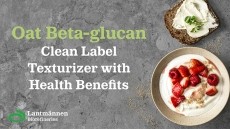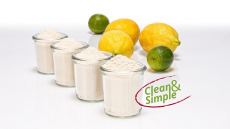“Low density” sucrose esters can boost wafer flexibility

Emulsifiers are required in the batter for making ice cream cone wafers to prevent the goo sticking to industrial baking surfaces, with lecithin the most popular choice to perform the non-stick role.
Sisterna says sucrose esters reduce the density of batters by permitting more air to enter them, and therefore producing a cone that is more easily mouldable.
“Any raising agents could be deleted from the recipe, when sucrose esters are used,” the company said.
“Because of the lower density of the batter and wafer, the flexibility of the wafer is better; the wafer can be more transformed, before it breaks. On the other hand, the force that is needed to break a wafer with sucrose ester is lower.”
Sisterna said sucrose ester batters improved flow, delayed starch gelatinisation and produced a greater surface area.
EU safety
The European Food Safety Authority has issued positive safety opinions on sucrose esters produced by reacting sucrose and vinyl esters of fatty acids, along with sucrose esters of fatty acids (E473) and sucroglycerides from palm oil, lard, and tallow fatty acids.
Singaporean company Compass Foods applied in 2008 for approval to market sucrose esters from monoesters of lauric acid, mysteristic acid, palmitic acid, and stearic acid. These sucrose esters are produced via a different process, by reacting sucrose and vinyl esters of fatty acids.
This is said to result in very tiny residues of vinyl esters of fatty acid, acetaldehyde, and p-methoxyphenol – but these were not seen to be at a level to raise concern for EFSA’s panel.
Sisterna produces sucrose esters from a variety of sources.


























